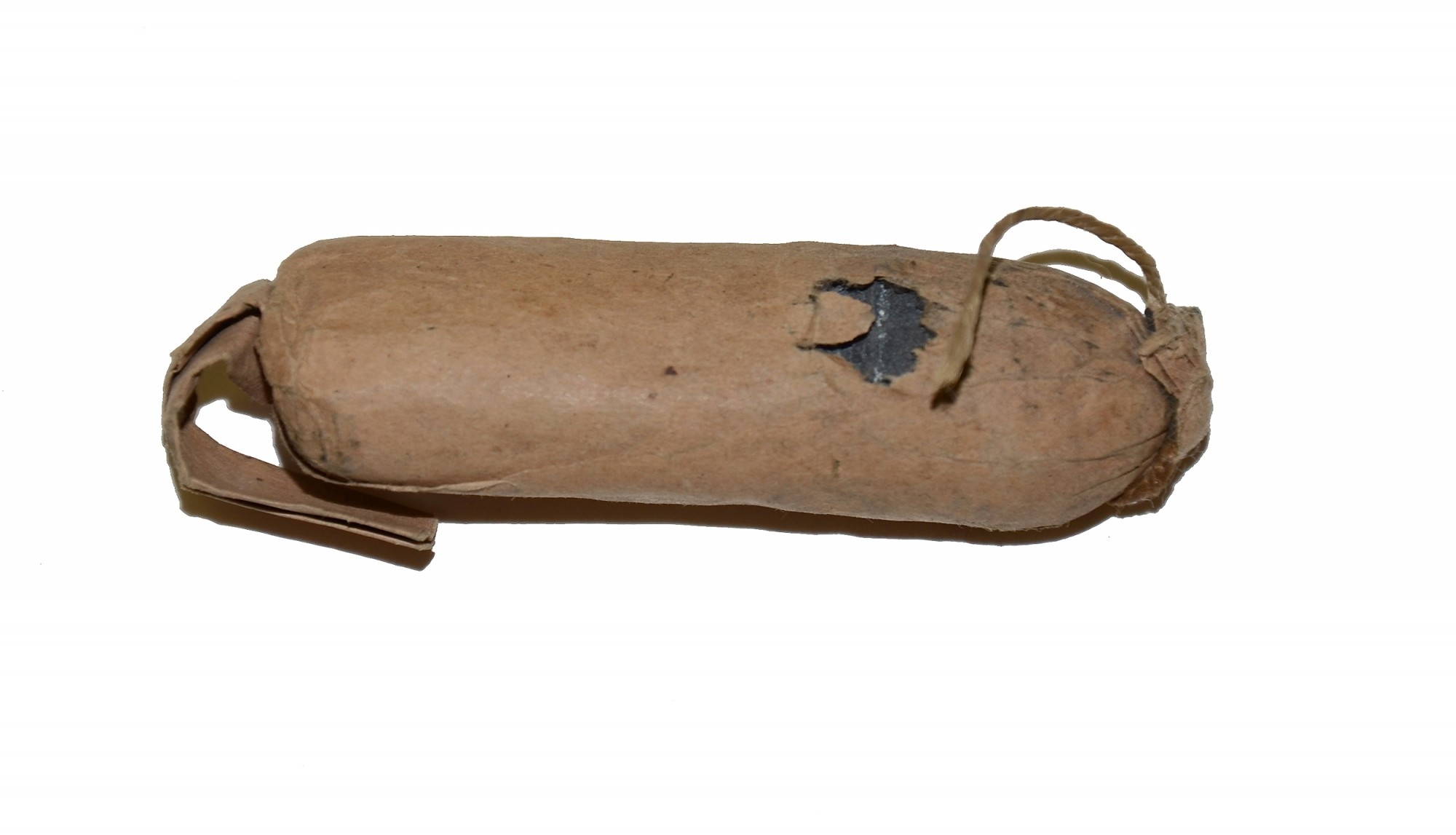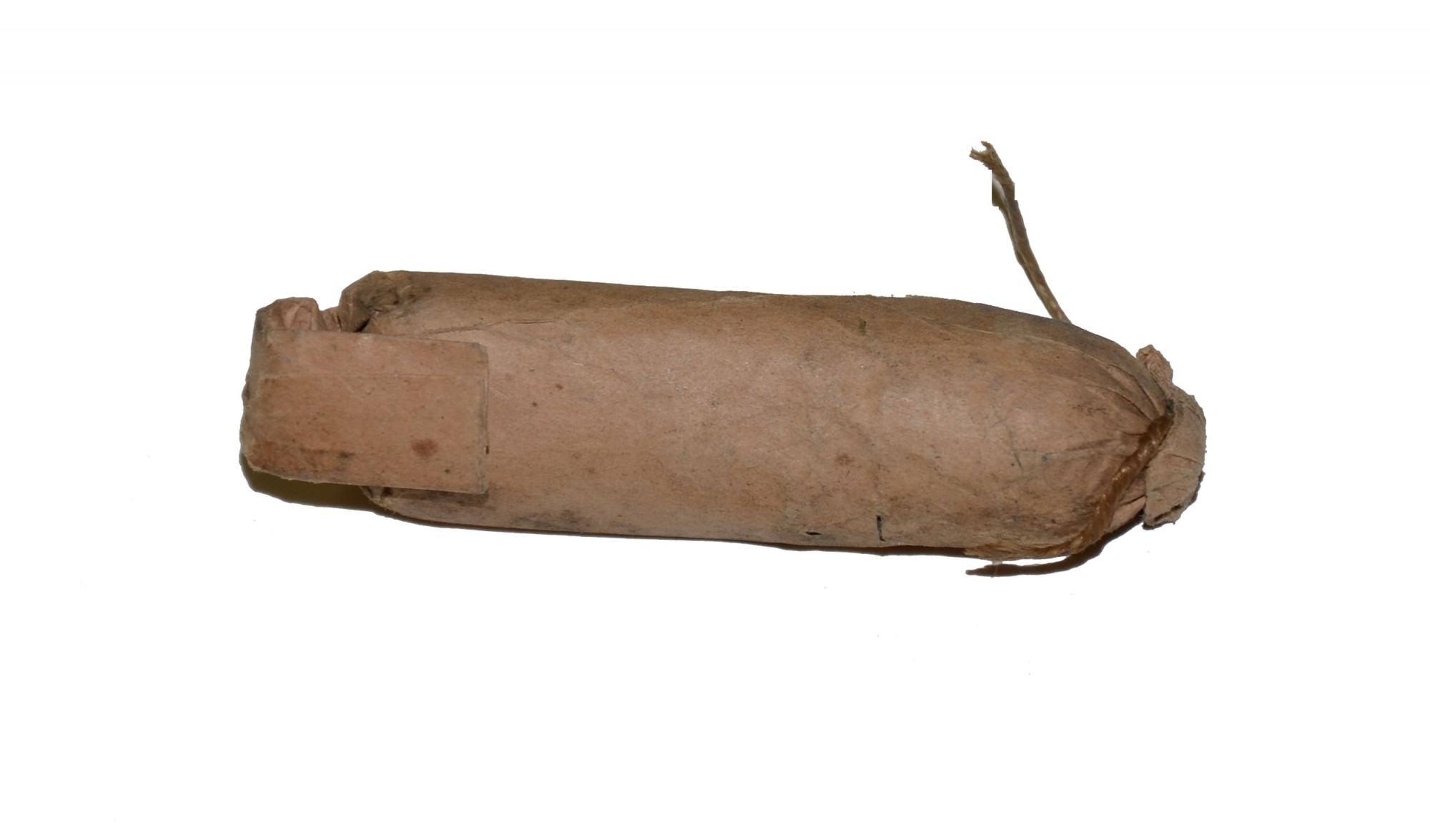site search
online catalog
ORIGINAL .69 CAL PAPER CARTRIDGE

Hover to zoom


$125.00 SOLD
Quantity Available: None
Item Code: 458-321
Presented here is an original but partially torn Federal .69 paper wrapped cartridge. This artifact is considered a common type of ammunition used with smoothbore muzzleloaders prior to and during the Civil War. The .69 caliber round is wrapped with the original brown paper and remnants of its accompanying powder charge is encased within the original beige or tan colored paper wrap. Paper shows a ¼” diameter rip near the bullet head where some of the loose black powder has escaped. Slight surface soiling. Wrap is tightly bound at the point of the bullet nose. To load his musket, the soldier tore (or bit) off one end of the paper and poured the powder down the muzzle of the barrel. Muzzleloaders used bullets that were slightly smaller than the bore diameter of the barrel in order for the weapon to be loaded properly with the common .69 caliber ball measuring a diameter of .574 inches. Cartridge comes in its own clear, acrylic cylindrical case. Though slightly torn, this specimen of standard smoothbore musket ammunition is an original example of a Civil War Federal infantryman’s .69 caliber paper cartridge.
~~~~~~~~~~~~~~~~~~~~~~~~~~~~~~~~~~~
THIS ITEM, AS WITH ALL OTHER ITEMS AVAILABLE ON OUR WEB SITE,
MAY BE PURCHASED THROUGH OUR LAYAWAY PROGRAM.
FOR OUR POLICIES AND TERMS,
CLICK ON ‘CONTACT US’ AT THE TOP OF ANY PAGE ON THE SITE,
THEN ON ‘LAYAWAY POLICY’.
THANK YOU!
Inquire About ORIGINAL .69 CAL PAPER CARTRIDGE
Most Popular
Historical Firearms Stolen From The National Civil War Museum In Harrisburg, Pa »
Theft From Gravesite Of Gen. John Reynolds »
Selection Of Unframed Prints By Don Troiani »
Fine Condition Brass Infantry Bugle Insignia »
featured item
VERY SCARCE US GOVERNMENT PURCHASE MERRILL RIFLE
This Merrill breechloading rifle is one of just 566 contracted for by the US government in December 1861 and delivered from August through December 1862, inspected and marked by Zadock Butt, and known to have been issued to several Union regiments,… (490-7012). Learn More »


